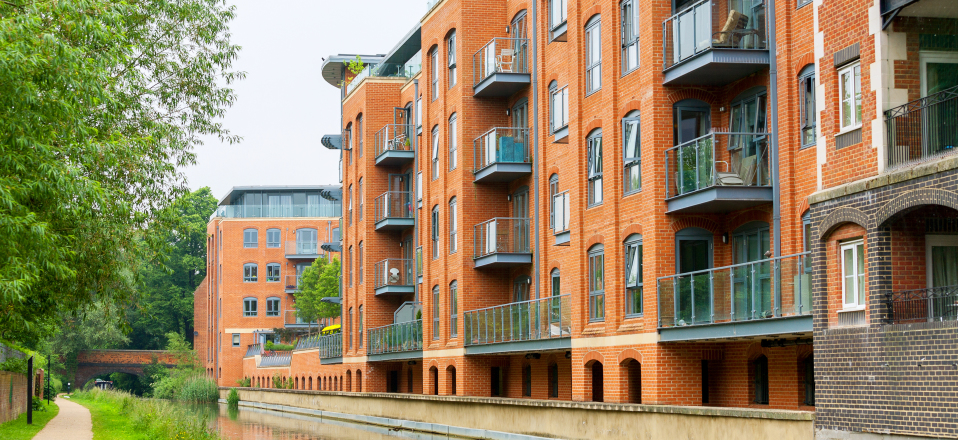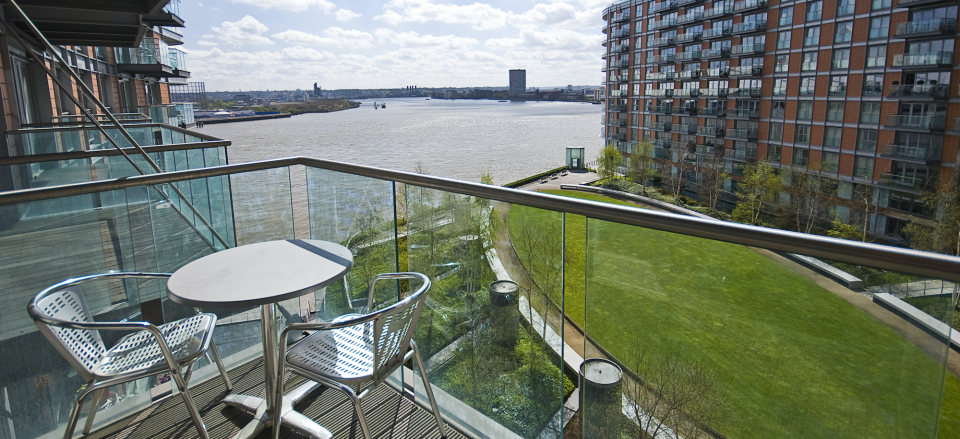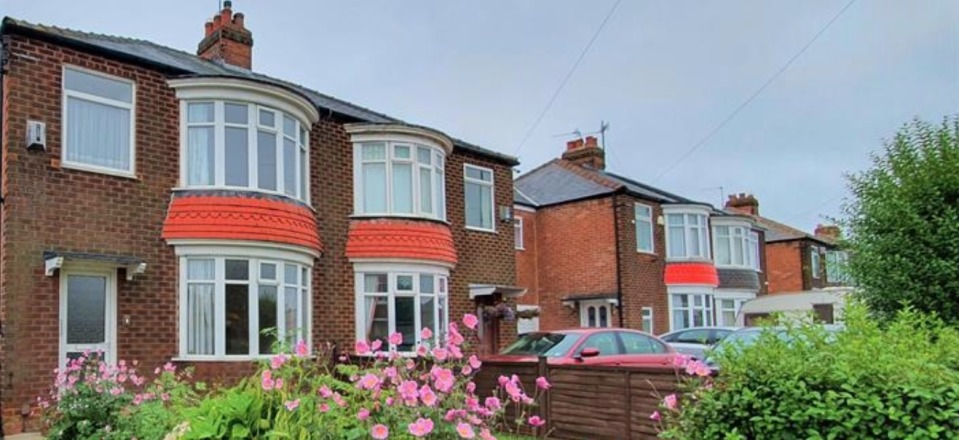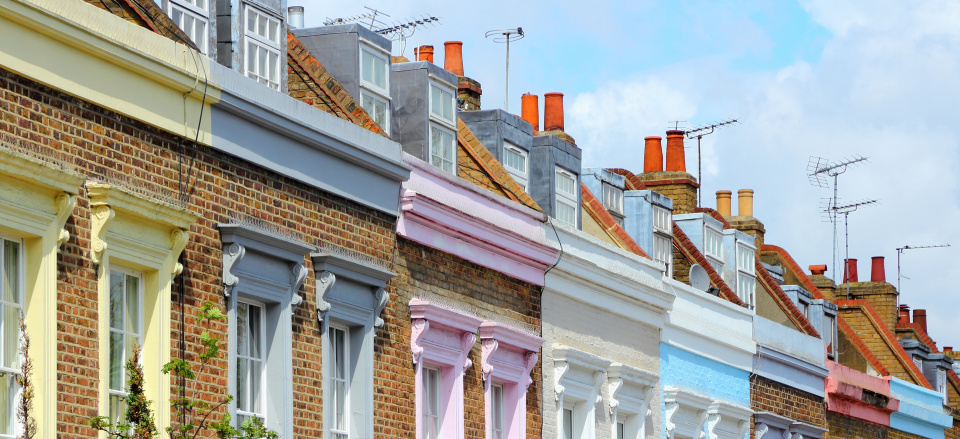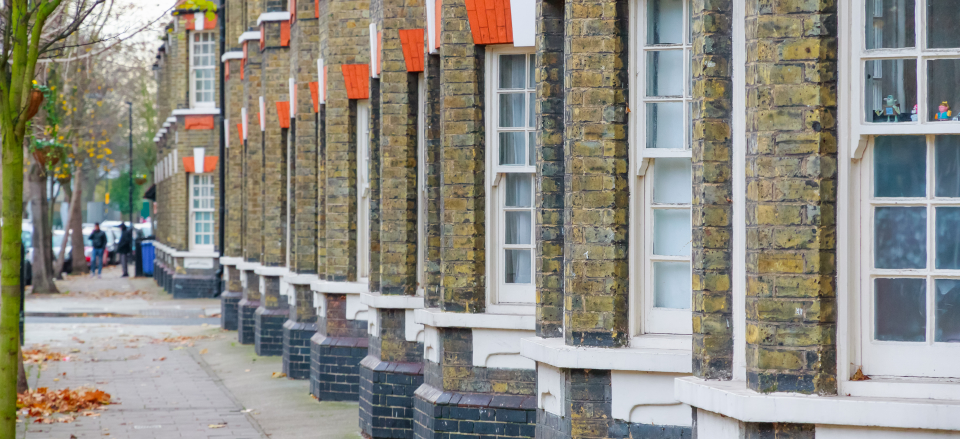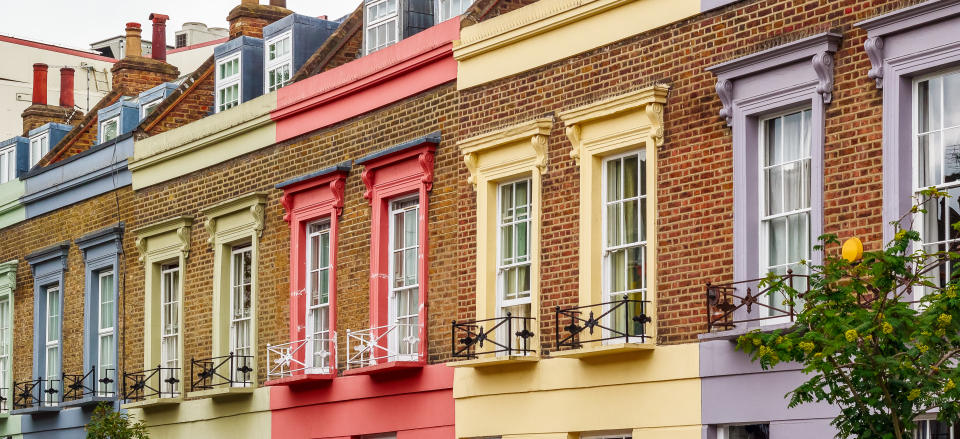UK house prices hold firm as new buyers continue to enter the market
New restrictions to control the spread of Covid-19 are set to support buyer appetite in the near-term, according to our House Price Index.
UK house prices continued to climb in August, with the annual growth rate edging up to 2.6%, from 2.5% in July.
It means that the average UK house price is now £218,262, according to our latest House Price Index.
What’s happening to house prices?
Annual house price growth in August ranged from 1.7% in the north east, to 3.3% in the north west, Yorkshire & the Humber, and Wales.
Eight of the 20 cities tracked by our House Price Index had annual house price growth of more than 3%.
Nottingham and Manchester led the pack, with house prices up by more than 4% year-on-year. Only Aberdeen registered a decline.
What’s driving these figures?
A mismatch between buyer appetite and the number of homes for sale is continuing to support house prices.
And as new buyers continue to enter the housing market, the impetus for price rises shows no signs of slowing.
Buyer demand since the start of the year is now 39% higher than the same time spell in 2019, with the pandemic driving much of this, as last month's House Price Index revealed.
The uptick in buyers has also led to more homes coming onto the market, as homeowners look to sell their existing property and buy elsewhere. The supply of homes for sale is now 10% higher than a year ago.
Meanwhile, new sales agreed over the last nine months are 3% higher than the same period last year – even with the closure of the housing markets across the UK during lockdown.
But the three- to four-month lag between sales being agreed and legal completion means that the number of homes sold this year is set to be 15% lower than in 2019, with transactions spilling over into 2021.
Who’s interested in buying right now?
First-time buyer appetite to get onto the housing ladder jumped when the English housing market reopened for business in May after a 50-day shutdown.
However, it has softened over the last two months as growing economic uncertainty and reduced availability of higher loan-to-value mortgages hit first-time buyers.
And while first-time buyer demand remains well above 2019 levels, it is now back in line with pre-pandemic levels.
But existing homeowners are taking up a greater share of home moves. Homeowner appetite to trade up or down the housing ladder is 37% higher than pre-Covid-19 levels and is 53% higher than this time last year.
This in turn is resulting in more homes coming onto the market at a higher price point.
Richard Donnell, research and insight director at Zoopla, said: “A change in the mix of buyers is supporting market conditions with sustained demand from equity rich existing owners seeking more space and a change in location.
“In contrast, first-time buyer demand is weakening. First-time buyers have been a driving force of housing sales over the last decade.
"They remain a key buyer group but lower availability of higher loan-to-value mortgages and increased movement by existing homeowners means a shift in the mix of buyers into 2021.”
What’s in store for the rest of the year and into 2021?
We don’t expect much change in current housing market trends over the rest of the year, although a further softening in buyer demand is likely over the coming months.
Donnell explained: “Housing market conditions remain strong as new restrictions are introduced to control the spread of Covid-19. These changes are likely to continue to support housing demand in the near-term as the importance of the home grows.
“However, the housing market will not remain immune to the impacts of weaker economic growth and rising unemployment.”
Coronavirus hits first-time buyers as mortgage availability for lower deposits falls sharply
1 in 5 first-time buyers has delayed their property purchase, with nearly half of first-timers now worried about their financial security.
irst-time buyers are having to put their moving plans on hold as a result of the impact the coronavirus pandemic has had on mortgage availability and income stability.
Nearly half of people planning to buy their first property say they have had to delay their plans by an average of nearly a year as a result of the pandemic.
One in five first-time buyers has had to pull out of a purchase as a result of lockdown, while 49% saying they are now worried about their financial security, according to mortgage lender Aldermore.
Overall, four out of 10 first-time buyers say the pandemic has made it harder for them to get on to the property ladder, with a similar proportion saying it has made it more stressful.
What’s happening?
First-time buyers looking to get on to the property ladder are facing issues on three fronts:
-
Financial instability
The pandemic and its associated lockdown has hit many people’s income and job stability.
-
Cautious lenders
Mortgage lenders have become more cautious, leading many to pull their range for borrowers with small depositsThere are now no mainstream mortgages for people with only 5% to put down, with only a handful of specialist products remaining which require either a guarantor or that borrowers live in a specific area or work in a certain profession. There are also now only 45 mortgages for people with a 10% deposit.
-
Competition from landlords
Finally, the end of lockdown has led to a steep increase in property transactions, with first-time buyers once again facing competition from investment landlords who are keen to take advantage of the stamp duty holiday.
Why is this happening?
Mortgage lenders have been pulling products across the board as they review their ranges in the light of coronavirus.
The total number of residential mortgages has more than halved since the beginning of March, dropping from 5,222 to 2,338 now, according to financial information group Moneyfacts.
But products aimed at first-time buyers have been particularly hard hit as lenders reassess the level of risk they are prepared to take.
Mortgages for those with only small deposits are generally considered to be higher risk than those for people with a large equity stake in their home, as there is more chance of the borrower ending up in negative equity if house prices fall.
As such, the number of deals for people borrowing 90% of their home’s value has dropped from 779 in early March to just 45 now.
At the same time, lenders have repriced high loan-to-value mortgages.
While the interest charged on the average two-year fixed rate mortgage has increased by 0.1% during the past six months, rates on loans for people borrowing 90% of their home’s value have jumped by nearly 1% to average 3.53%, while the cost of the few remaining 95% loan-to-value deals has risen by 1.48% to 4.74%.
What you can do?
Don’t panic if you are a first-time buyer hoping to get on to the property ladder. There are still steps you can take to increase your chance of getting a mortgage.
-
Increase your deposit
If you have decided to delay your purchase by a few months, take the opportunity to try to save more towards your deposit. Borrowing 85%, rather than 90%, of your property’s value will increase the number of mortgage deals available to you from just 45 to 350.
-
Improve your credit score
You can increase your chances of qualifying for a mortgage by ensuring your credit score is as high as possible. Make the time to review your credit report to ensure it is up to date and accurate, and, if possible, take simple steps to improve it, such as paying off your credit card in full each month and ensuring you settle all of your bills on time.
-
Cut back on your spending
Affordability plays a key role in whether or not lenders approve you for a mortgage. As such, the lower your outgoings are relative to your income, the more chance you will be accepted for a mortgage. Lenders look at between three and six months’ worth of bank statements when assessing mortgage applications, so the sooner you can start cutting back, the better.
-
Use a broker
With deals for first-time buyers currently scarce, using a broker could help you secure a mortgage. Not only will they be able to scour the market on your behalf to find a deal that suits your circumstances, but they will also be able to advise you on which lenders are more likely to approve your application.
-
Ask the Bank of Mum and Dad
With the Bank of England base rate at a new record low, savings aren’t earning much interest at the moment. But interest rates on an 85% loan to value two-year fixed rate mortgage are an average of 0.73% lower than for a 90% one. See if your parents would be prepared to lend you a lump sum to help you qualify for an 85% loan to value mortgage, in exchange for you paying them a higher rate of interest on the money than their bank would.
-
Consider buy-to-let
If you can’t afford to buy in your local area but still want to get on to the property ladder, consider purchasing a property in a cheaper area and renting it out. The Legal & General Mortgage Club has seen an 18% increase in searches for first-time buyers wanting to enter the buy-to-let market since the beginning of September.
Shared ownership scheme overhauled to help first-time buyers
The initial share purchase has been cut by more than half to 10%.
The shared ownership scheme in England is being overhauled to help more people get onto the property ladder.
The government is reducing the minimum initial share people must purchase from 25% to 10%.
Those using the scheme will also be able to purchase additional shares in their property in 1% instalments, with slightly reduced fees. Previously they had to buy in 5% or 10% instalments.
To further boost the affordability of home ownership, landlords of properties in the scheme will cover the cost of any repairs and maintenance for new owners for a 10-year period.
What is shared ownership?
The initiative aims to make buying a home more affordable by enabling people to purchase a share in a home and pay rent on the part they do not own.
A shared owner can gradually increase the amount of the property that they own by purchasing additional shares, known as staircasing, until they own it outright.
These additional shares are purchased at the market price, meaning that if house prices in the area increase or decrease, the value of the remaining shares in the home will reflect that price change.
All shared ownership properties are leasehold, so those living in them also have to pay an annual service charge.
To qualify for shared ownership, you must be a first-time buyer who cannot afford to purchase a property in the traditional way. Your household income must also be less than £80,000 a year.
When you come to sell the property, the housing association has the right to find a buyer for it if you own less than 100%. If you own the property outright, it has the right to buy it back from you, known as first refusal, for up to 21 years after you acquired full ownership.
When do the changes come into effect?
The new model will apply to all new-build shared ownership homes delivered through the new Affordable Homes Programme, which is due to begin in 2021.
The majority of rented homes built under this programme will also come with the right to be part of shared ownership to enable social housing tenants to purchase a stake in their home.
What’s the background?
The shared ownership scheme sits alongside a number of government initiatives to help people purchase a property, including the Help to Buy scheme, Lifetime ISAs and Starter Homes.
The changes to shared ownership are designed to help more young people get onto the housing ladder.
The government says 87% of people would choose to own a property if they could, but the number of those aged under 35 who were homeowners had declined to just 27%, down from 65% in the 1990s.
Top three takeaways
-
Shared ownership is being overhauled to help more people get onto the property ladder
-
The minimum initial share is being reduced to 10% from 25%
-
Those using the scheme will also be able to purchase additional shares in their property in 1% instalments
‘Bank of Mum and Dad’ to fund nearly a quarter of house purchases this year
Family and friends will hand over an average of £20,000 each, according to Legal & General.
Nearly one in four property transactions in 2020 will be funded by the ‘bank of mum and dad,’ compared with just one in five a year ago.
Buyers have become increasingly reliant on financial support from loved-ones amid the economic uncertainty of the coronavirus pandemic, with parents or friends expected to be involved in 23% of all property purchases this year, up from 19% in 2019.
The ‘bank of mum and dad’ is expected to contribute towards an estimated 175,000 property purchases with a collective value of £50.3bn this year, handing over an average of £20,000 each, according to Legal & General.
Total lending is expected to fall from £6.3bn in 2019 to £3.5bn this year as a result of the disruption caused to the housing market by the coronavirus pandemic.
Friends and relatives are also predicted to be involved in 85,000 fewer transactions in 2020 than last year. But despite this drop, 24% of buyers say they are now more reliant on help from their parents and others than previously.
A whopping 65% of people who have recently bought a home say they would not have been able to do so without financial help.
Why is this happening?
First-time buyers have long been reliant on help from the ‘bank of mum and dad’ to put together a housing deposit.
Coronavirus appears to have increased this need, with buyers not only facing increased economic uncertainty, but many lenders have also withdrawn mortgages for borrowers with 5% or 10% deposits.
The research found that 15% of family members who were helping a buyer were now giving more than they would have done before the pandemic, with one in five increasing their contribution by at least 50%.
Who does it affect?
Unsurprisingly, buyers in London receive the most help at an average of £25,800, followed by those in the East Midlands at £24,100 and Wales at £23,900.
People purchasing a property in the capital were also most likely to need support, with 41% receiving some financial help, with buyers in the West Midlands and Scotland coming in joint second place at 27%.
At the other end of the spectrum, buyers in the North East and Yorkshire and the Humber only needed average contributions of £13,800 from the ‘bank of mum and dad’.
They were also the least likely to require assistance, with under 20% needing to call on friends or family for financial help.
What’s the background?
Four out of 10 people who helped a friend or relative buy a property funded the loan from cash savings, while 27% used money they inherited.
While 16% used investments, 12% needed to downsize their own property in order to unlock the cash.
Nigel Wilson, chief executive of Legal & General, said: “Generous parents, grandparents, family members and friends are gifting thousands towards deposits, with the ‘bank of mum and dad’ outpacing even stamp duty cuts as a driver of renewed housing market activity.”
Top three takeaways
- Nearly one in four property transaction in 2020 will be funded by the ‘bank of mum and dad’
- Family and friends are expected to help fund an estimated 175,000 property purchases
- Total lending is expected to fall from £6.3bn in 2019 to £3.5bn as a result of the disruption caused to the housing market by the coronavirus pandemic
Revealed: the 10 highest-yielding areas in the UK
Find out where lower house prices play a key role in generating high yields.
Middlesborough in North Yorkshire and East Ayrshire, North Ayrshire and Inverclyde, all in Scotland, offer the highest rental yields in the UK.
The four regions top our ranking of the 10 hotspots for investors looking for the UK’s highest rental yields.
They all provide a 7.7% gross rental yield, thanks to a combination of low property prices and a steady median monthly rent of between £450 and £476, according to our latest research.
Where are the other highest-yielding places?
Scotland dominates our top 10, with five of the hotspots north of the border.
East Ayrshire, North Ayrshire and Inverclyde are closely followed by Glasgow and Stirling, where yields are 7.6% and 7.5% respectively.
North east England is the next most dominant region in the top 10, thanks to an ‘investor triangle’ of Sunderland, County Durham and Hartlepool.
Sunderland and County Durham both generate a 7.4% gross annual average yield, while Hartlepool has an average yield of 7.3%.
Tom Parker, consumer spokesperson at Zoopla, said: “With all of the top 10 hotspots being in northern England or Scotland, it’s clear that the significantly lower house prices in these areas, coming in well under the national average of £291,055, play a role in the higher yields generated for investors.”
Top 10 UK investor hotspots .png)
Looking regionally, Scotland and the North East top the ranking with overall yields of 7.3% and 6.6% respectively. Wales comes in third, with a 6% yield.
Meanwhile, Yorkshire and The Humber and the West Midlands follow closely behind, with yields of 5.5% and 5.4%.
What about London?
Higher house prices have a knock-on effect on rental yields in London. However, there are still areas of the capital that provide above-average yields when compared with the average UK yield of 5.2%.
Barking and Dagenham offers the highest rental yield, at 5.3%. The boroughs of Newham and Havering follow, with an average yield of 4.9% apiece.
At the other end of the spectrum, the City of London provides a 3.1% rental yield despite average monthly rents of £2,598. The next lowest yields are in Kensington and Chelsea, and the City of Westminster.
What is happening in the market?
Investor interest has been stimulated by the introduction of the stamp duty holiday in July, which means a potentially lower tax bill for those investing in additional properties until early next year.
Demand has increased across the UK, but particularly in southern England, where investor demand has declined the most over the past five years, following increased stamp duty rates and the withdrawal of tax relief for mortgaged investors.
If you're looking to invest, it's important to fully research the local housing market and seek professional advice before committing. There is a wide range of factors to consider, also including rent and tenant demand trends.
Parker explained: “Yields are, of course, one consideration for investors and, for those considering their first foray into the buy-to-let market, it is worth considering house price growth forecasts for an area, and whether rents are likely to rise over time.”
Eviction ban extended by 4 weeks until 20 September
MPs and charities warn the end of the suspension on evictions could lead to a steep rise in people being made homeless.
A ban on landlords evicting tenants has been extended for a further four weeks in England and Wales.
The evictions ban that was set to expire on 23 August, has been extended until 20 September, Housing Secretary Robert Jenrick has announced.
In the majority of cases, renters will now have a six-month notice period if their landlord wants to evict them. This will be in place until at least 31 March 2021.
"I know this year has been challenging and all of us are still living with the effects of COVID-19. That is why today I am announcing a further four-week ban on evictions, meaning no renters will have been evicted for six months," Jenrick said.
"I am also increasing protections for renters – six-month notice periods must be given to tenants, supporting renters over winter."
Only "the most egregious cases" such as those involving anti-social behaviour and domestic abuse perpetrators will be exempt from the six-month notice period, Jenrick said.
The evictions ban was introduced in March as part of emergency legislation to help people whose finances had been impacted by the coronavirus pandemic. It was originally due to last until 25 June but was later extended until late August.
The latest extension, lasting until late September, was announced just two days before the August expiry date.
MPs and housing charities have expressed concerns that the end of the eviction suspension period could lead to a steep rise in people being made homeless.
There are calls for England and Wales to follow the Scottish government, which has extended the ban until March 2021.
Who does it affect?
The ban on tenant evictions was controversial when it was brought in, as it was seen as being less generous towards renters than the three-month mortgage payments holiday introduced for homeowners.
The mortgage payment holiday enabled homeowners to suspend payments for up to three months. Meanwhile, the eviction ban meant tenants could not lose their home, but it did not offer them any breathing space on paying their rent.
Housing charity Shelter estimates that 442,000 people in private rental accommodation are in rent arrears, nearly half of whom fell behind with their payments since the start of the pandemic.
It said 174,000 private tenants had already been threatened with eviction, despite the ban still being in place.
What should I do if I can’t pay my rent?
It is important to talk to your landlord as soon as possible if you are struggling to pay your rent.
The government included buy-to-let landlords in the mortgage payment holiday scheme on the understanding that they would pass on the benefit to tenants who were facing financial difficulties.
If you can still afford to pay some of your rent, ask your landlord if they would accept a reduced payment for a period of time, particularly if you think you will be able to make up the shortfall once your finances have recovered.
It is also worth checking to see if there are any government benefits, such as universal credit, that you might be eligible for if your income has fallen.
What are my rights as a tenant?
It is illegal for a landlord to evict you without giving you written notice or obtaining a court order. They are also not allowed to harass you or lock you out of your home, even temporarily.
If you are in an assured shorthold tenancy, the most common type of tenancy, they can start the eviction procedure through giving you either a section 21 or section 8 notice.
Your landlord does not need to give a reason to evict you under a section 21 notice, but they must give you a warning period. This period was previously two months, but it has been extended because of the coronavirus pandemic.
If you do not leave the property at the end of this period, your landlord must go to court to evict you legally.
You cannot be issued with a section 21 notice during the first four months of your original contract.
Landlords can only issue a section 8 notice if they have legal grounds to end your tenancy, for example if you are in rent arrears. They must apply to a court for a possession order to evict you.
Prior to the eviction ban, the notice period varied, depending on the grounds for possession.
Top three takeaways
- A ban on landlords evicting their tenants for not paying rent is set to expire on September 20
- There are calls for the ban to be extended, with MPs and charities warning there could be a steep rise in the number of people being made homeless
- If you are struggling to pay your rent it is important to talk to your landlord as soon as possible.
Home repossessions fall to ‘unprecedentedly low levels’
No homes were repossessed in the UK in the three months to the end of June, following the introduction of mortgage holidays and the Coronavirus Act.
The number of homes being repossessed fell to a record low in the second quarter of this year.
The Ministry of Justice attributed the “unprecedentedly low levels” of possessions to measures introduced to help homeowners weather the coronavirus pandemic.
No homes were repossessed in the three months to the end of June, according to the MOJ. The number of mortgage orders for possessions is down 96% to 149, and mortgage possession claims were down 97% to 161.
The steep fall in repossession activity was seen for both owner-occupied properties and those belonging to landlords, with landlord possession actions dropping by 89%.
Why is this happening?
Shortly after the UK first entered lockdown in March, a number of measures were introduced to enable people to stay in their homes even if their incomes were hit by the Covid-19 pandemic.
The Financial Conduct Authority said homeowners and landlords could apply for a three-month mortgage payment holiday, and it was later announced that this could be extended for a further three months.
The government also passed the Coronavirus Act, which put a temporary halt on all repossession activity, initially for three months, and later until 23 August this year.
Landlords were also not allowed to start eviction proceedings against tenants for three months, even if they were behind with their rent.
Who does it affect?
The latest figures show that a total of two million homeowners and landlords applied for a mortgage payment holiday since the initiative was first launched.
But repossession figures are expected to start increasing again once the support measures are removed.
In fact, although there is currently a block on repossessions, nine possession warrants against homeowners and 268 against landlords were still issued during the second quarter.
What should I do if my mortgage payment holiday is ending?
If you are coming to the end of a mortgage payment holiday and are worried you won’t be able to resume full payments, the most important thing to do is talk to your lender.
Mortgage lenders have made it clear they will be sympathetic towards homeowners whose finances have been affected by the pandemic and will explore a range of options with them to find the best one for each individual.
Among the solutions lenders can offer you is an extension to your current repayment holiday for another three months.
They may also agree to accept reduced repayments for a period of time or switch you over to an interest-only mortgage, which would significantly lower your monthly payments.
Another option is to extend your mortgage term, as doing so would also make your monthly repayments smaller.
Despite the flexibility lenders are showing, trade body UK Finance has urged homeowners who can afford to resume full mortgage payments to do so.
Top three takeaways
- The number of homes being repossessed fell to a record low in the second quarter
- The Ministry of Justice said no homes were repossessed in the three months to the end of June
- It attributed the “unprecedentedly low levels” of possession activity to the measures introduced to help homeowners weather the coronavirus pandemic.
UK rents drop 0.8% in last three months
But a two-speed rental market is emerging, according to our quarterly Rental Market Report.
Average UK rents fell by 0.8% between April and June, according to our quarterly Rental Market Report.
This takes the annual growth rate in rents to 1.1%, down from 1.7% a year ago.
However, a two-speed market is emerging, with rental growth actually up across regions outside of London.
Where are rents rising and falling?
The two-speed rental market is being driven by diverging trends in supply and demand between London and the rest of the UK.
Annual rental growth – excluding London – is up 2.2% as demand continues to outstrip supply in many markets. It ranges from 1.5% in the West Midlands, through to 3.1% in Wales.
Only six of the 64 towns and cities tracked by the rental index have shown rental falls in the past year (Swindon, Coventry, Middlesbrough, Northampton, London and Aberdeen), with a further six registering growth over 4% (Rochdale, Sunderland, Bristol, Preston, York, Leicester).
But a rise in the number of homes for rent in London and Edinburgh, which is increasing choice for renters, is not being matched by similar levels of demand. And this is leading to downward pressure on rents and the rate of rental growth in these two cities.
London
Increasing supply and weaker demand in the capital have meant that rents have fallen 3% since the start of the year, and they have dropped 1.4% over the last 12 months.
The greatest downward pressure on rents has been seen in the heart of London, where the working from home policy and a clampdown in travel and tourism during lockdown have hit demand for rental property.
This is the second time rents have gone into negative territory in London in the last three years. In March 2017, rents were down 2.8% on the year after the 3% stamp duty surcharge was introduced in 2016.
Edinburgh
Meanwhile, annual rental growth in Edinburgh, the second most popular tourist destination in the UK, has slowed to 0.2%, down from 4% a year ago, as declining tourism and policy changes take their toll on landlords and the supply of homes for rent.
What is rental demand like?
Overall demand for rental homes is running 33% higher than pre-lockdown levels, and 25% above 2019 levels across the UK.
It’s likely to have been driven by pent-up demand from renters whose plans were put on hold during the housing market shutdown, plus other renters who may have used lockdown to reassess their home and lifestyle.
At the same time, the number of homes for rent has climbed since lockdown ended. It is now slightly ahead of seasonal trends, with the volume of homes for rent across the UK up 7% on this time last year.
How affordable is renting at the moment?
Affordability has remained largely unchanged in recent years, except for in London, where the proportion of income needed to cover average monthly rents has fallen to 45% from 54% in September 2014.
Perhaps unsurprisingly, the capital remains the most expensive region in the UK in which to rent a home.
What can we expect for the rest of 2020?
Zoopla Research expects annual UK rental growth outside London to halve from 2.2% to 1% by the end of the year, with an annual decline in London of up to 5% by the end of 2020.
Head of research, explained: “The future path of annual rental growth will be determined largely by the economic outlook, especially the rise in unemployment and the future path of average earnings.
"However, as new rental supply continues to catch up with demand levels, we could see further softening of headline rental growth by the end of the year, although there will be some areas of outperformance.
“Uncertainty continues over how any further outbreaks of COVID will impact the resumption of office life, student life and tourism, and this uncertainty will impact demand in some markets during the rest of the year.”
Help to Buy equity loan scheme extended
The government has pushed back the qualification deadline to help buyers whose new homes have been delayed by coronavirus.
The government has extended the deadline for the Help to Buy initiative by two months.
Under the current scheme, which enables people to buy a new-build home, builders need to have finished construction by the end of December in order for buyers to qualify for the equity loan.
This deadline has now been extended until 28 February 2021, with the deadline for legal completion remaining unchanged at 31 March 2021.
The Help to Buy equity loan scheme enables people to purchase a new-build home with just a 5% deposit, with the government topping this up with a 20% loan that is interest-free for five years.
Housing minister Christopher Pincher said: “Today’s announcement will help provide certainty and assurance for Help to Buy customers whose new homes have been delayed due to coronavirus.”
Why is this happening?
The current version of the Help to Buy equity loan is due to be replaced by a new version of the scheme on 1 April 2021.
The changes, which include limiting it to first-time buyers, have been flagged up well in advance.
But thousands of families who had planned to use the scheme are understood to be at risk of not qualifying, as the home they were planning to buy may not be built in time due to the coronavirus pandemic.
The extension of the deadline should enable them to still use the scheme.
Who does it affect?
The Help to Buy equity loan scheme has helped 272,852 people buy their first home or trade up the property ladder since it was first launched in April 2013.
It has, however, been criticised for helping people on high incomes buy expensive homes.
The new version of the scheme will address these criticisms, limiting the initiative to first-time buyers only and imposing property price caps on the maximum value of homes that can be purchased through the scheme in different regions.
What’s the background?
The Help to Buy equity loan scheme is one of a number of initiatives to help people get onto the property ladder.
Other schemes include the Lifetime ISA, under which the government contributes up to £1,000 a year to savers aged under 40 who set aside £4,000 annually towards the purchase of a new home or retirement.
The First Homes scheme enables first-time buyers and key workers in England to buy a new-build home at a 30% discount.
First-time buyers have also benefited from a stamp duty exemption on homes costing up to £300,000, although the Chancellor recently announced a stamp duty holiday for all buyers on homes costing up to £500,000 until 31 March 2021.
Top three takeaways
- The government has extended the deadline for the Help to Buy initiative by two months
- Under the current scheme, homes would need to have finished being built by the end of December in order for buyers to qualify for the equity loan
- This deadline has now been extended until 28 February 2021, with the deadline for legal completion remaining unchanged at 31 March 2021
Q&A: what’s happening in the property market?
We catch up with Richard Donnell, director of research and insight at Zoopla, about the trends he has seen since the housing market reopened for business.
Q. Richard, it’s been more than two months since the housing market reopened in England. What trends are you seeing now?
A. We are still seeing demand that built up during lockdown coming back to the market in England - and this is showing up in sales figures, with the number of sales agreed now running significantly higher than early March.
There are also strong indications that some households used lockdown as a chance to reassess how, and where, they live. These people are now entering the housing market, listing their home for sale and looking for their next home.
Q. What about Scotland, Wales and Northern Ireland?
A. As these markets have opened up over the last month or so, we have seen similar trends emerge, with demand rising and sales starting to climb too.
Q. So activity in the market is back to ‘normal’?
A. Sales numbers have certainly bounced back, but to put this in context, the number of sales agreed between January and July this year are still 20% lower than the same period in 2019.
As a result, we expect overall transaction levels to be around 15% lower this year as a whole - a significant fall, but a much more modest decline than many were expecting back at the start of lockdown in March.
Q. What does this mean for prices?
A. The higher levels of activity in the market are a hallmark of the rise in demand we have seen as markets have opened up. But we are seeing very clearly that this demand is not being matched by supply across the UK.
What I mean by that is that the number of households deciding to put their home on the market is currently far outnumbered by the number of households hoping to buy.
This imbalance between demand and supply is actually putting upward pressure on prices at the moment, and as a result we have seen the headline rate of price growth for UK homes rise to 2.7% in June, up from 2.4% in May.
Q. Are all the regions seeing this trend too?
A. Broadly that is right, yes. But when we dig into our index and additional data at a more granular level, some differences emerge. For example, in some city markets the imbalance between demand and supply is varied, as shown in the chart below.
It is no coincidence that the cities to the right of this chart, including Sheffield, Liverpool and Manchester, where demand is outstripping supply the most, are the places where house price growth is currently the strongest.
Q. The demand in many cities seems strong from this data, but we are hearing a lot about people moving to more rural areas?
A. We have seen increased demand in areas adjacent to cities. There are some buyers who are considering such a move, especially if their commuting patterns are set to change and they don’t have to travel to the office every day.
However, we believe that this is a ‘one-off’ factor rather than a seismic shift. We can see that in many city markets the largest demand is for properties within the city limits, and as markets start to reopen, there will be some rebalancing back towards higher density areas within cities.
Q. What impact has the stamp duty announcement had?
A. As we examined in our stamp duty research earlier in the year, London and the South East were always set to benefit the most from any stamp duty holiday. That's because higher average prices mean that buyers in these regions can make the biggest savings.
Our data is showing that this is the case, with a notable 27% jump in demand from purchasers in the weeks since the announcement earlier this month.
Q. What’s the outlook for the rest of this year?
- We expect the annual rate of pricing to remain within the 2-3% band well into the fourth quarter, October to December, as the current demand in the market supports pricing.
The economic landscape, especially unemployment levels, will impact how pricing evolves into 2021.

